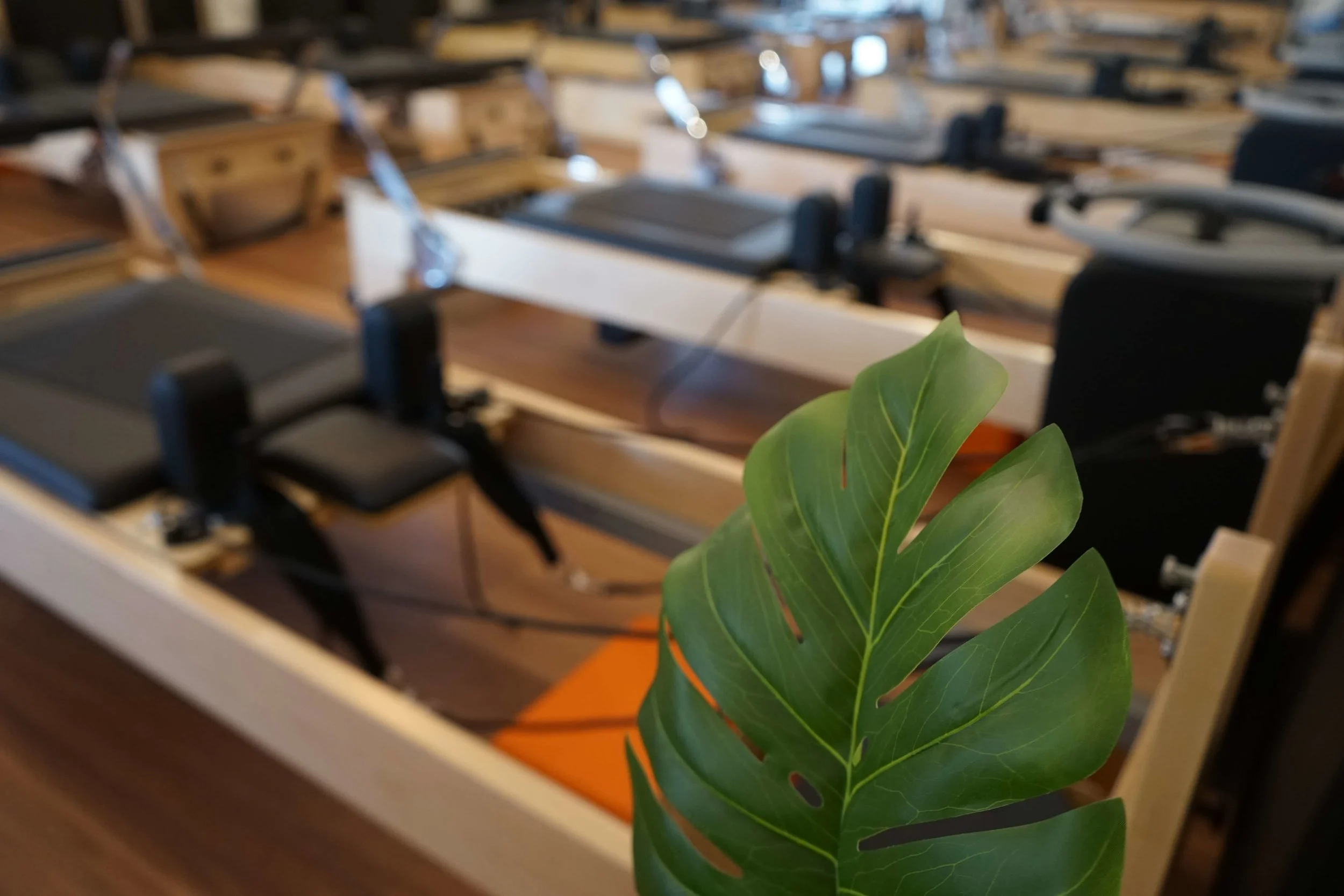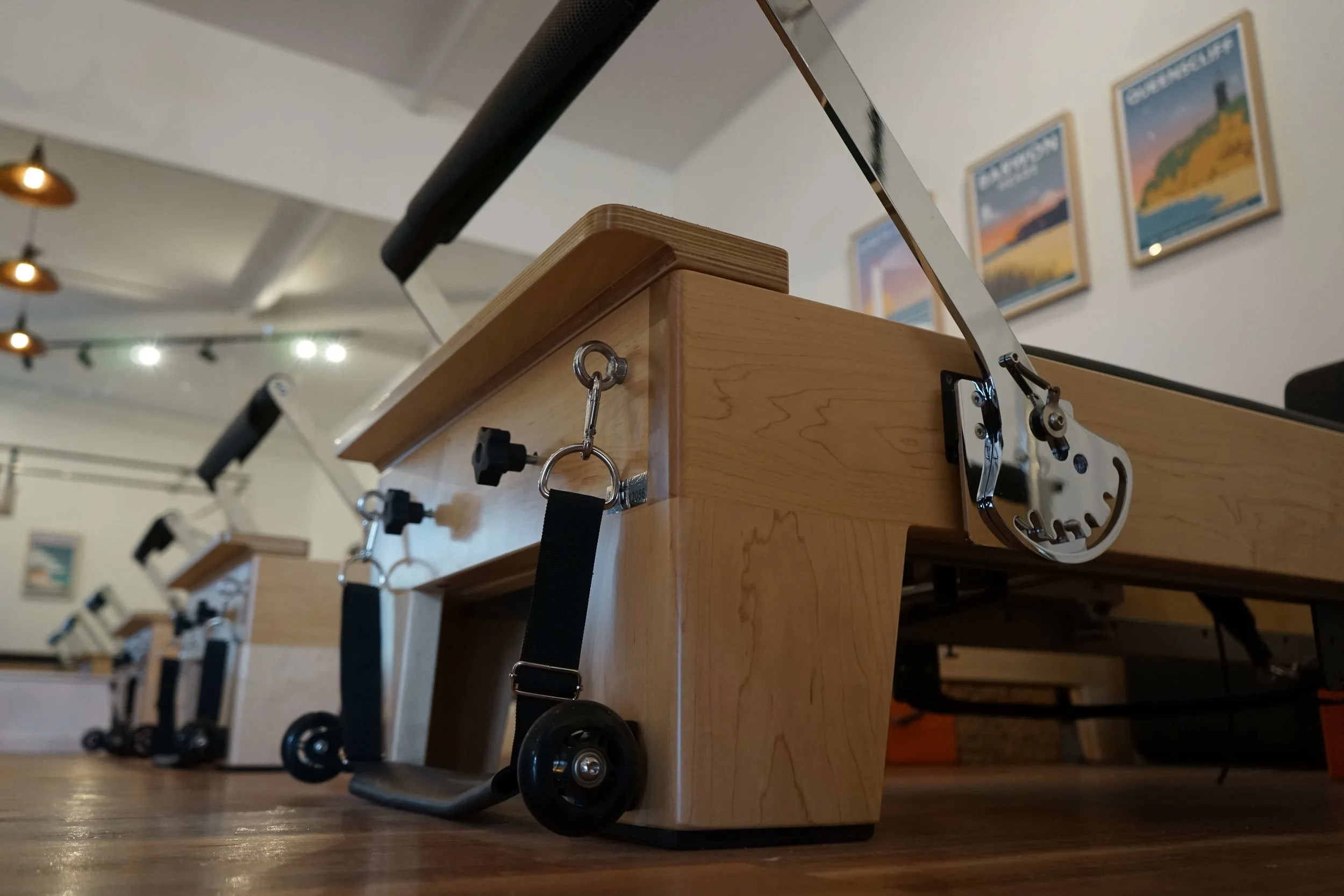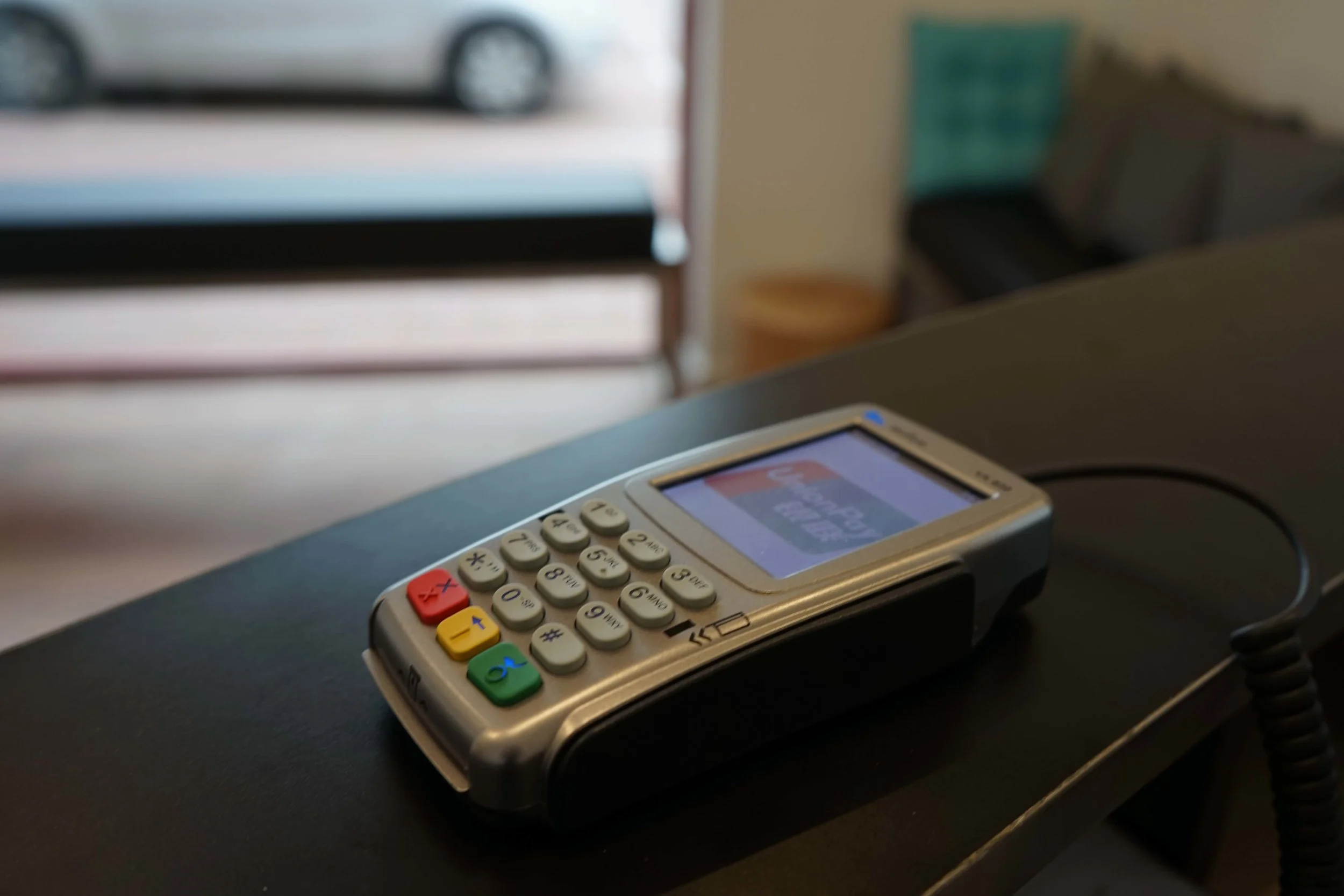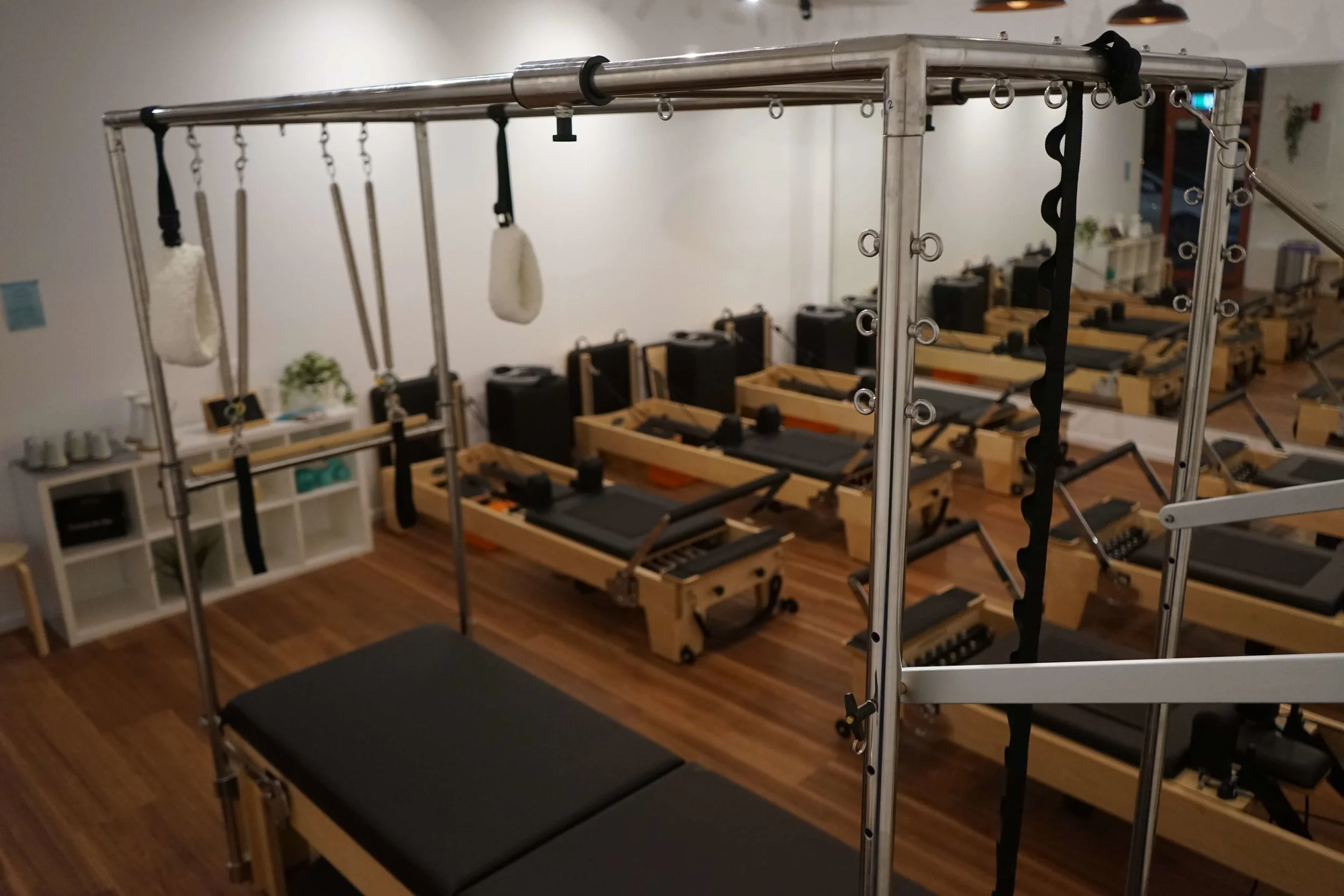
Bay City Health - Blog
Is Pilates good for athletes?
Pilates is very popular among athletes of virtually any sport. Although it’s no substitute for repetition of the movements within your given sport, Pilates is a great addition. It challenges muscles in a way that is hard to reproduce elsewhere. Complicated, whole body movements on the Pilates apparatus can improves aspects of performance like balance, hip and core strength, power, proprioception and coordination, and when added to an existing skill set, can help improve overall performance. Most Professional athletes all over the world do Pilates, and most professional sporting clubs will either have Pilates equipment within their training facilities or outsource to local Pilates instructors. Some notable Athletes that do Pilates include:
NBA superstar Lebron James
Football legend Gary Ablett
Soccer goal scoring machine Cristiano Ronaldo
Tennis champion Serena Williams
Pro surfer Sally Fitzgibbons
World champion swimmer Emily Seebohm
If you want to try Pilates to help improve your sports performance, give the team at Bay City Health Group a call on 03 5229 3220 or book an appointment online with one of our professional instructors.
Are Reformer classes expensive?
Reformer classes are relatively inexpensive. A Reformer class usually costs between $25-$35 per class, which isn’t too bad when you consider a coffee costs around $5, a pint of beer roughly $10 and a Yoga class is around $10-$20. This takes into account the average commercial grade Reformer costs anywhere between $5,000-$8,000 - whereas the Mat used in Yoga and Pilates Mat classes will cost maximum $50! Considering the benefits you get with a Reformer class, the quality of equipment and the specialised training instructors must go through to be able to use and teach on a Reformer– it’s not a bad deal at all. One thing to keep in mind, most studios offer bulk session discount purchases which can reduce the price per class to as low as $20 per session in some instances.
What training is required to become an Osteopath?
To become a registered Osteopath in Australia, you have to complete a minimum 5 year University Masters Degree, which consists of a 3 year Bachelor Degree in Health/Clinical Science followed by a 2 year Masters in Osteopathic Medicine*. All Osteopaths must be registered with AHPRA (Australian Health Practitioner Regulation Agency) once they are qualified and will have current first aid, police check and professional & public liability insurance. This must be maintained throughout an Osteopath’s career. Most Osteopaths are also registered with Osteopathy Australia (check the OA website to see if your Osteopath is registered). Some therapists may claim to perform ‘Osteopathic techniques’, but unless they have completed and graduated the University degree and are registered through AHPRA they are not an Osteopath. To maintain registration as an Osteopath, ongoing learning is required so that skills and knowledge are up to date with current standards and evidence based research.
To get an appointment with one of Bay City Health Group’s Osteopaths, call the clinic or book online through our website.
03 5229 3220
baycityhealth.com.au
*The structure of the Osteopathy course is currently undergoing some minor changes at the Australian Universities that teach Osteopathy - and might differ slightly to the timeframe/structure mentioned above.
What are the benefits of Pilates?
Movement and exercise are one of the best things you can do for your health. We hear this every day in the news, we hear it from health professionals, we hear it from our teachers and we hear it from our mum & dads. And there is good reason for that! Just some of the benefits that exercise can promote include: numerous hormones are released with exercise that are good for our mental health, controlling body weight, muscle strength and endurance, cardiovascular improvements, bone density, joint stability, lymphatic flow and much more. How does this relate to Pilates? Pilates is a method of exercise. So along with all of the benefits that general movement and exercise bring, Pilates has its own set of benefits. Below is a small sample of the benefits of Pilates:
Increased Core strength
Better Balance
Coordination improvements
Improved Posture & Postural awareness
Spine stability
Increased Mobility & Flexibility
Injury prevention
Injury rehabilitation
Breathing awareness
Education & Knowledge of important movements
Falls Prevention
If you want to give Pilates a try, contact our team at Bay City Health Group online or by phone to get a session with one of our professional instructors.
03 5229 3220
baycityhealth.com.au
Who can do Pilates?
Almost anyone can do Pilates. There are multiple forms of Pilates including Mat Pilates, Reformer Classes and Clinical/Studio Pilates which can cater for any body type, gender or age. In particular, the Clinical version of Pilates has machines that can assist many movements, therefore taking away a lot of the strain associated with jarring exercises and body weight type movements. Pilates is incredibly versatile, with it being widely used in the rehabilitation setting by many rehab qualified health practitioners, by professional sporting clubs getting the most out of their athletes, by private studios all over the world and even facilities for senior citizens to keep them mobile.
What can Osteopaths treat?
Osteopaths treat a wide and varied range of musculoskeletal conditions. Due to the extensive repertoire of techniques that Osteopaths possess, most people that walk through the door can be treated. However, as with any health modality, there will be patients that Osteopaths can’t treat, in which case they will refer out to the right health professional. Osteopaths will only treat once a thorough patient history and assessment has been completed, and most important of all, verbal or written consent from the patient has been obtained (once the treatment plan has been communicated). Below is a small sample of conditions that Osteopath’s can treat:
Low Back Pain
Neck Pain
Sports Injuries
Joint stiffness
Shoulder Pain & Injuries
Hip & Pelvic Pain
Acute Pain
Chronic Pain
Muscle Tightness
Movement Limitations
Certain Types of Headaches
Pregnancy related joint & muscle pain
To make a booking with a qualified Osteopath for any of the conditions listed and more, head on over to the Bay City Health Group ‘bookings’ page to book online or for the clinic phone number.
Is Pilates a good workout?
Pilates is a great workout. There are different forms and levels of Pilates to cater for a wide variety of people, but if your intention is to get a workout then Mat classes & Reformer classes will suit you. Usually there a different levels of group classes, so depending on your fitness level and Pilates capabilities, there will be a class that will provide you with the right workout at the right intensity. In Mat Pilates, the class is predominantly body-weight which is traditionally a tough workout designed to get a sweat and build strength. On the reformers however, the use of springs can either increase resistance and hence the challenge making it an extremely hard workout, or provide assistance when needed to help participants perform correct movements they couldn’t have achieved otherwise.
What is involved in an Osteopathy consult?
A typical new consultation with an Osteopath includes a patient history to find out details about the presenting complaint, which usually covers previous injuries, surgeries, timeline of the presentation and events leading up to the onset of pain/dysfunction and any other relevant information that can help form an educated opinion on what is happening. Next is a quick screen of the body before a further in-depth assessment which would generally consist of locating the site of pain, testing the area for range of motion including the regions above & below, performing specific tests for the given region and assessing other parts of the body that could be contributing to the problem area. Then comes a diagnosis if available – sometimes it’s not clear what the diagnosis is, and the Osteopath will make it clear if this is the case and will send for further testing such as X-rays if needed. Next comes the hands-on treatment once agreed to by the patient. Osteopaths have an extensive range of hands on techniques that they can choose from at any given moment depending on what is required based on the results of the assessment and what best suits the individual patient. Some techniques include massage, PNF stretching (also called MET), articulation, strength work, joint manipulation/adjustment/cracking, traction or compression, lymphatic drainage and myofascial release (MFR) to name a few. And finally, a management plan which should include stretches and/or exercises, heat or ice following treatment, how many treatments over a certain period, what physical activity you can or can’t do and expectations for the following week after treatment.
What is Osteopathy?
Osteopathy is a form of professional hands-on manual therapy that is popular for its holistic view of treating and assessing the body as a whole unit. This view leads to a belief that any structure or system can contribute to pain and/or dysfunction elsewhere in the body. Where many modalities focus on a specific area of pain or discomfort, Osteopaths will scan and assess other regions of the body if needed to find not just the problem, but the cause behind it. Osteopaths are well known for their large and varied range of techniques, which enables them to successfully treat many presentations.
Is Pilates safe?
Pilates is very safe. With any form of exercise there are certain risks, but due to the variety of apparatus and exercises available, Pilates can cater for almost anyone. For people with injuries or medical conditions – they will be better suited seeing a professional health practitioner (such as a Physio, EP or Osteo) for their Pilates, however non-clinical people will find that most Pilates instructors have been through good quality training and can safely meet your needs. There are some more complex and possibly dangerous exercises and manoeuvres that can be performed on the Pilates machines/equipment (which can look quite amazing), however they are usually reserved for clients with an extensive background in Pilates and are deemed capable by their instructor.










